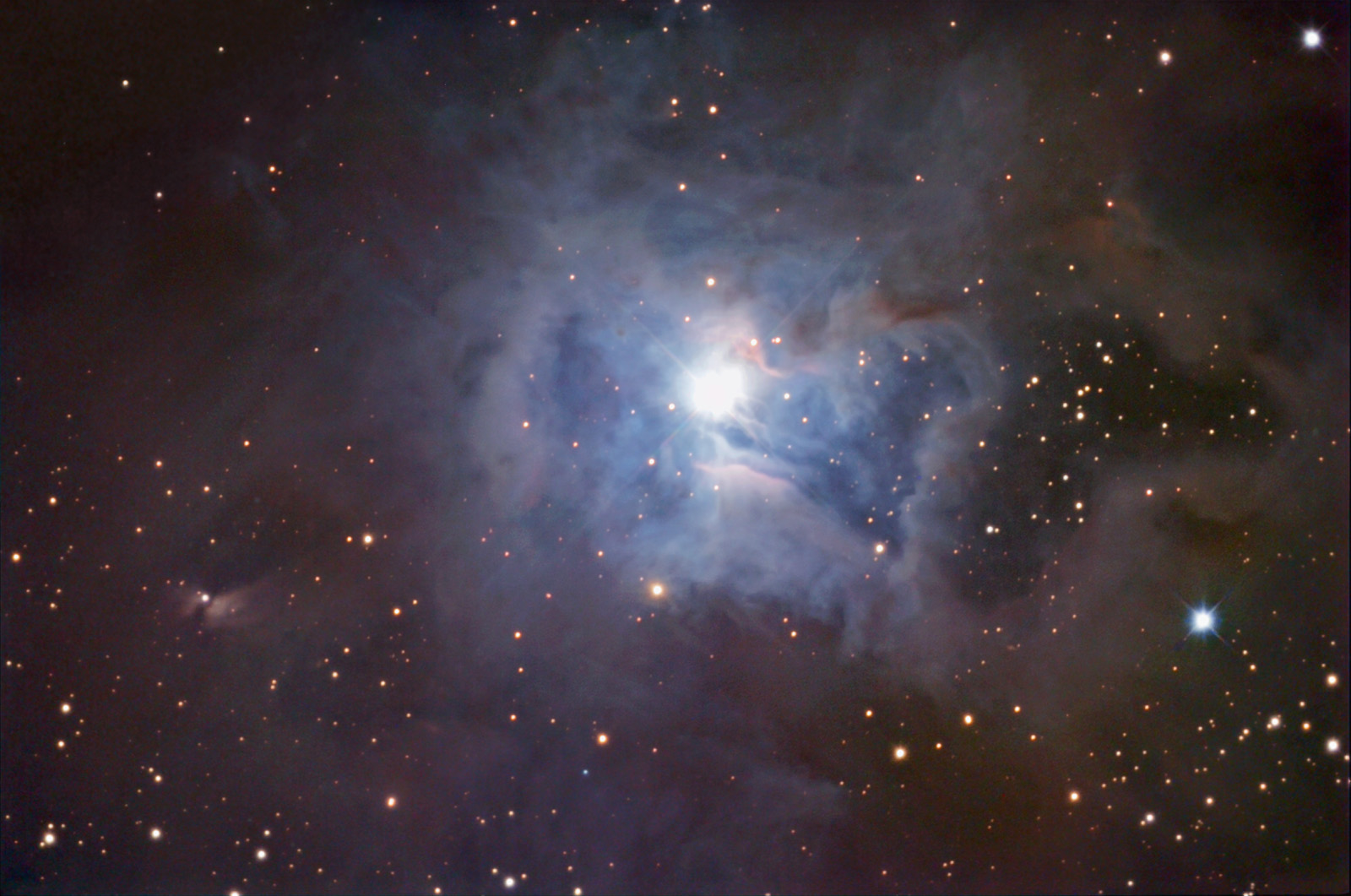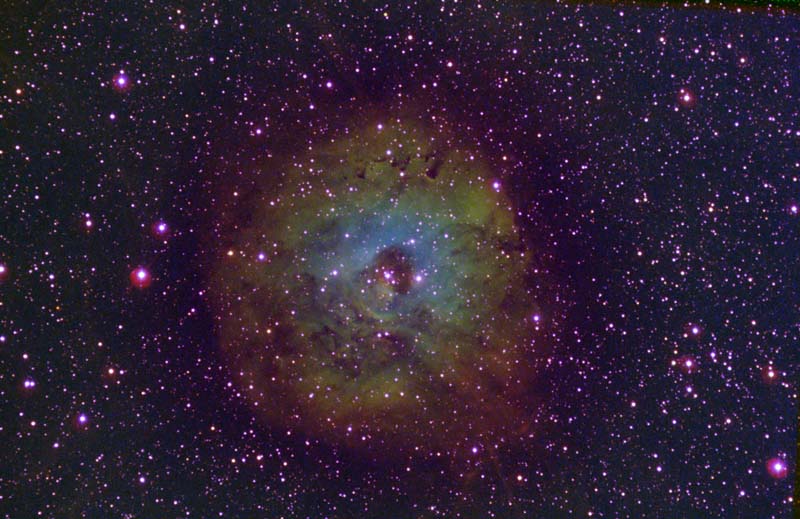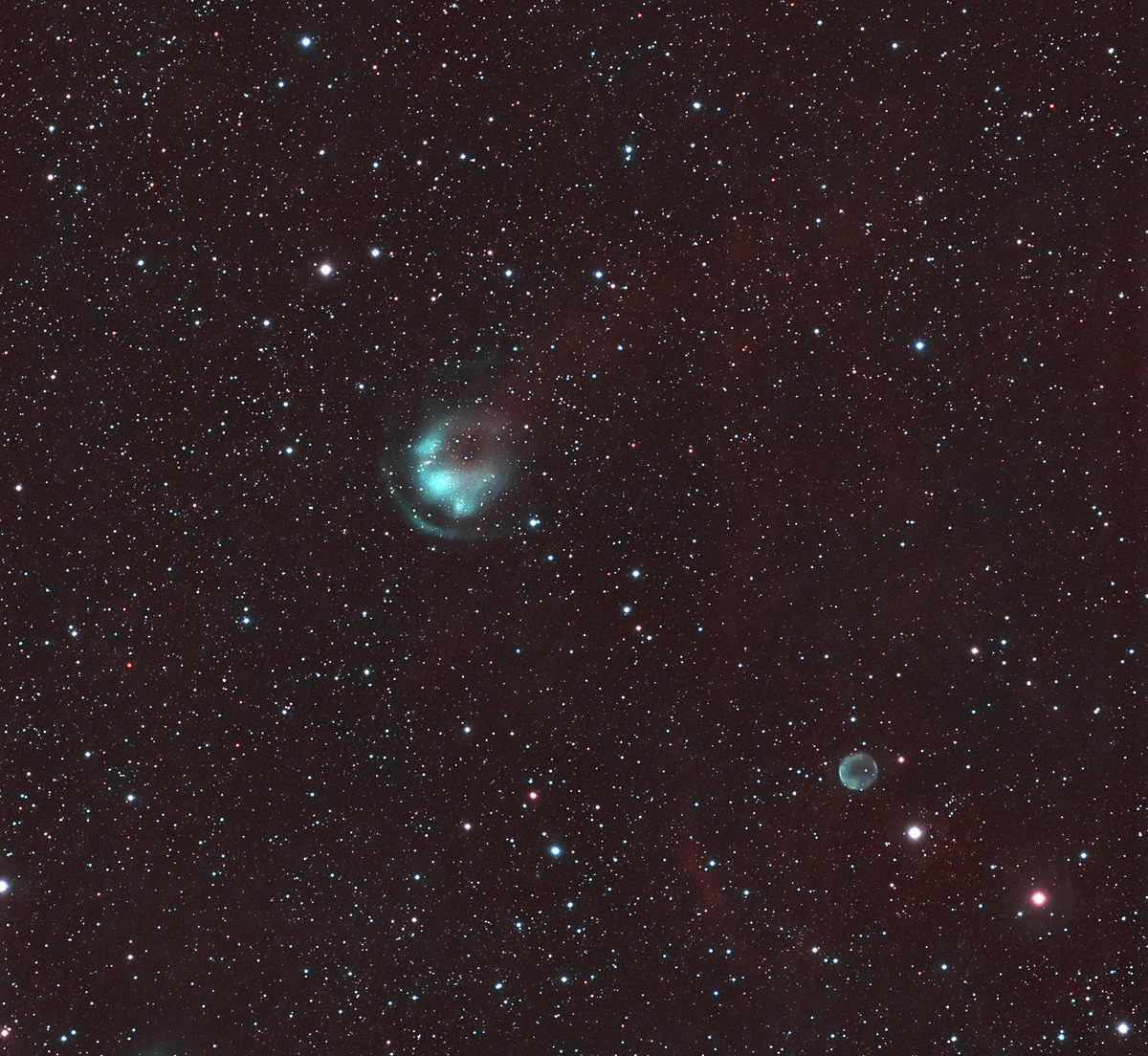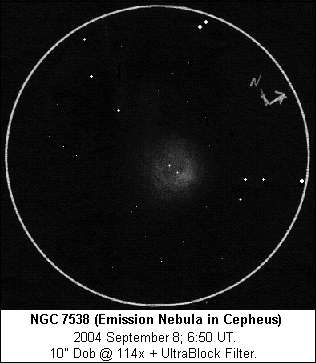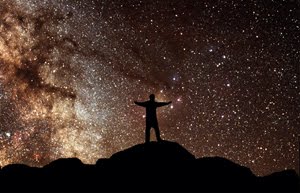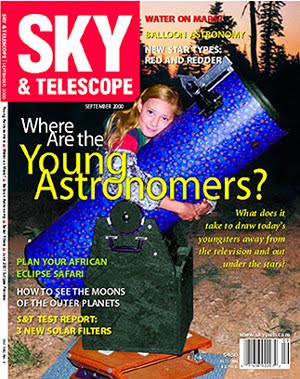When one is handed a lemon.....
Well, I had planned on a full three nights at CalStar this year, but circumstances dictated otherwise. In retrospect, probably a good thing. I'm not up to 110 degree heat, as a survivor of the infamous Shingletown Star Party bake-a-thon (is that place still there after the fires?) many of us recall. So, on Saturday I looked at the options of closer (but brighter) observing sites, and eventually settled on joining the Santa Cruz Astronomy Club at Bonny Doon Airport in 40 minutes from my home south of Aptos. It had been a nice day on the coast, with dinner on the Municipal Wharf, followed by the quick drive past ocean and redwoods to the observing site.
Arriving at sunset, I found a few other observers present. John Pierce, Ron Yelton, Bill Seiler, a newbie woman named Terri, and off in the dark distance... Dean. I quickly removed my 18" Obsession from the back of the Fit, set it up on my Equatorial Platform, collimated, aligned finders, got my laptop and battery set up on a collapsible table... pork rinds and water in place, and before you could say "hey... there's the Milky Way", I was observing.
Bonny Doon is great for its convenience to those of us on the coast. I had considered Coe, but it was twice the drive, and I thought the skies only marginally better. I'd really be interested in determining a mag-limit difference between the places on average nights. I do know that when the fog is in, over Santa Cruz, BD can be dark. But last night there was significant glow to the south over Santa Cruz, and to the northeast over San Jose. The Milky Way never showed the sugary granularity we so enjoy on the best nights. But... 40 minute drive, wide open sky.... I'm not complaining. In fact, thanks to the SCAC for making this available!
So, all that said, I will report that I observed until about 12:15 a.m., and concentrated on part of the 140+ targets I had identified for the three nights of CalStar (no, I didn't expect to observe them all). I worked only a northern sky - curious what I could see from this location. I was pleasantly surprised!
I had commented to Dean, who is traversing the Herschel 400-II, that my days (and I suspect his) of logging 50 objects a night, are done. These tend to be tough, but doable, requiring exercising the eye and patience, and swapping eyepieces and filters. My telescope is an 18" f/4.5 Obsession, I track using an Equatorial Platform. Finders are a Rigel Quickfinder and ancient Celestron 10x70. All filter views were using an NPB. Eyepieces were all Nagler type II - 20mm/103x, 12mm/171x and 7mm/294x. Total observing time was on the order of 3-1/2 hours.
When I was driving home afterward, the fog was coming in... and at 10 a.m. here, as I write this, it is still in. Fog means, dark skies.
For those interested in Bonny Doon
Next month, on new moon, I plan on joining the SJAA at Coe, and help out at that club's Half Messier Marathon. Sounds like fun.
Here are the dozen targets I tracked down last night...
 Abell 81 PK 117+18.1 = IC 1454 = PN G117.5+18.9 22 42 25.0 80 26 32 34"x31" 14.4 Cep
Abell 81 PK 117+18.1 = IC 1454 = PN G117.5+18.9 22 42 25.0 80 26 32 34"x31" 14.4 Cep7mm NPB - Easily visible, annular with averted vision, thick ring elongated E/W. Noticeable without a filter.
Abell 86 PK 118+8.2 = PN G118.7+08.2 00 01 31.2 70 42 29 70" Cep
12mm NPB - Suspected large annular, or perhaps just a large part of the edge but not complete - mostly the thick western 2/3rds. With time, haze shows.
NGC 7023 21h 01' 68° 00' 8 Cep
12mm NPB - Nebulosity most noticeable surrounding mag 7.3 SAO19158. Surrounding area shows much dim nebulosity, and bright knot surrounding 3 dim stars about 34 arcminutes west of bright star.
NGC 7129 21h 41' 65° 50 2 9.3 Cep
7mm -NPB - Ended up looking at very nearby NGC 7133 - much more interesting. Containes three IC objects, and four distinct glows. Three brightest are surrounding stars, fourth glow has a very dim star involved and is identified as LBN 497. Very pleasing view.
S 170 23h 59' 64° 23 20 Cas
12mm NPB - Nebulosity is involved dimly throughout region mostly involving three stars of nearly equal magnitude, and a fourth dimmer star much removed to the south, out of line in what otherwise would form a parallelogram. The north eastern star is most involved, with the brightest and most extensive glow.
Abell 6 PK 136+4.1 = PN G136.1+04.9 02 58 41.9 64 30 188"x174" 15 Cas
12mm NPB - Fairly large undifferentiated glow, very dim stars involved, and occasional knottiness.
Abell 3 PK 131+2.1 = Sh 2-189 = PN G131.5+02.6 02 12 06.6 64 09 60" 16 Cas
20mm NPB - Only suspected a glow. 12mm NPB glow appears to involve several dim stars, but no detail. 7mm NPB reveals the suspected glow as three dim stars, but these are involved in a half arc of nebulosity extending from those three stars to the west, then around to a one dim star to the south. Appears planetary may be annular with a missing eastern edge.
Abell 75 PK 101+8.1 = NGC 7076 = PN G101.8+08.7 21 26 23.6 62 53 67"x47" 14.5 Cep
20mm NPB - Easily visible with averted vision as a mostly round glow. With 7mm NPB, appears mostly round but eastern half is much brighter and more well defined. Somewhat annular and with a thin but complete western "strand" that completes the disk.
NGC 7538 23h 12' 61° 13 7 Cep Sh2-158
7mm NPB - Nice glow around a pair of brighter stars, at first appears to just be localized to the stars, but with averted vision more and brighter nebulosity appears throught the region immediately to the NNE. Suspected much larger plume to the E of the bright area and curving around to the S, as if mirroring the N but much more dimly.
NGC 7635 23h 18' 60° 55 8 Cas sh2-162
20mm NPB - Easily visible especially around SAO20575. Extends noticably NE/SE across the bright star, and away to the SE in a large dim glow. 7mm defines area SE of brighter area as the Bubble, a fairly even mostly round glow somewhat elongated NE/SW, with several dim stars involved. Mostly even brightness across Bubble, but with a less well defined ESE edge.
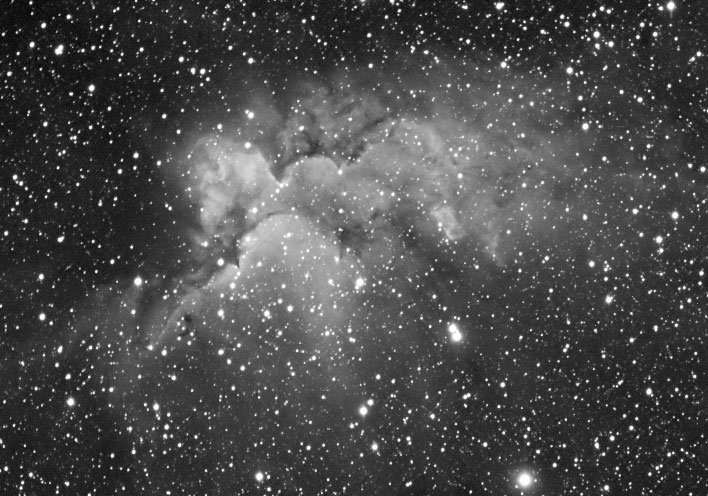 NGC 7380 22h 45' 57° 45 20 7.2 Cep
NGC 7380 22h 45' 57° 45 20 7.2 Cep 20mm NPB - Nice open cluster with nebulosity. Glow encompasses entire cluster, with nicely defined eastern edge, a line of stars running N/S. A lesser chain defines the N edge of the nebulosity, which appears mostly triangular in its brightest section. A dimmer section, also large, appears to be brokien off to the south, as if separated by a dark lane. Nice object.
Abell 2 PK 122-4.1 = PN G122.1-04.9 00 45 36 57 57. 33"x29" 14.5 Cas
12MM NPB - Easy location and easy to see. This small round glow is 7 arc minutes south of mag 8.3 SAO21680. With 7mm and NPB, it appears at times annular and elongated slightly NE/SW. This is a farily obvious Abell planetary.


